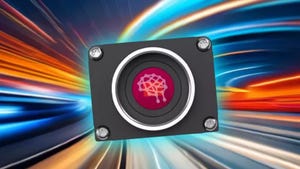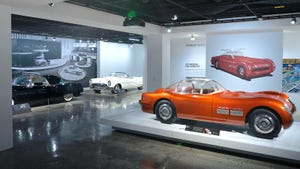October 19, 2010
In machine and industrial systems design, there are numerousareas in which design engineers have to make a decision about whether to usepneumatic or electro-mechanical devices. In this "Design Decisions" viewpoint fromExlar, a provider of electro-mechanical devices, the advantages ofelectro-mechanical actuators are explored in comparison to pneumatic options.
Exlar believes that system design requirements for handling multiplepositions, higher levels of positioning accuracy and flexibility in changingpositions are among the key elements offered by an electro-mechanical solutionthat make them preferred to pneumatic solutions for many design applications.
Another significant factor in favor of electro-mechanical devices is the highercost of operation for pneumatic products. The cost savings provided by anelectro-mechanical actuator system in place of pneumatics becomes very apparentwhen comparing direct energy costs. Toillustrate, following is a comparison of a horizontal point-to-point move with15 inches of stroke and 35 lbs of tooling weight to be cycled 30 times perminute with a duty cycle of 50 percent.
With an electro-mechanical cylinder, the move time of 0.5 secondscan be achieved using a motion profile with 0.1 second acceleration, 0.3seconds at constant velocity and 0.1 second deceleration. The maximum velocity of this profile is 37.5inches per second. Based on thisinformation, the power required for the electro-mechanical actuator to performthis application is less than 100W with an energy cost at $0.07 per kwh, lessthan $145 per year.
Using a pneumatic cylinder with a load of 35 lbs and therequired maximum speed of 37.5 inch/sec, a pneumatic cylinder with a diameterof 2 inches is used with an assumed air pressure of 85 psi. The cylinder volumein combination with the cycle rate gives annual air consumption of 847 thousandcubic feet of compressed air at 85 psi. This equates to an annual energy cost of more than $4,300.
When comparing installed system cost over time, thecomponent cost differences between a pneumatic and electric system arerecovered through energy savings in as little as five months in typicalsystems. The energy cost savings in subsequentmonths are approximated in the chart below.
CostComparisonExlar |
Other Considerations
In addition to operational costs, another advantage electro-mechanical cylinders have over pneumatic cylinders is the energy cost wasted by air leaks. The chart belowshows up to $9,000 lost per year with a simple air leak of .25 inch indiameter.
Air Leak Costs |
From 2004 to 2007 the price per kWh for industrial large-scaleconsumers increased approximately 40 percent and indicators point to a doublingof energy costs by 2014. This is anothermajor driving force behind machine builders' preferences to move toelectro-mechanical solutions
Electro-mechanical devices can also be considered greenerwhen it comes to overall CO2 reduction. With 85 percent of energy production inthe United States coming from fossil fuels, studies by groups like the FraunhoferInstitute indicate that the CO2 emissions from fossil fuel power plants can be33 times less when powered by an electro-mechanical solution in place of apneumatic solution.
John Walker is vicepresident of marketing/customer service, for Exlar.
About the Author(s)
You May Also Like







